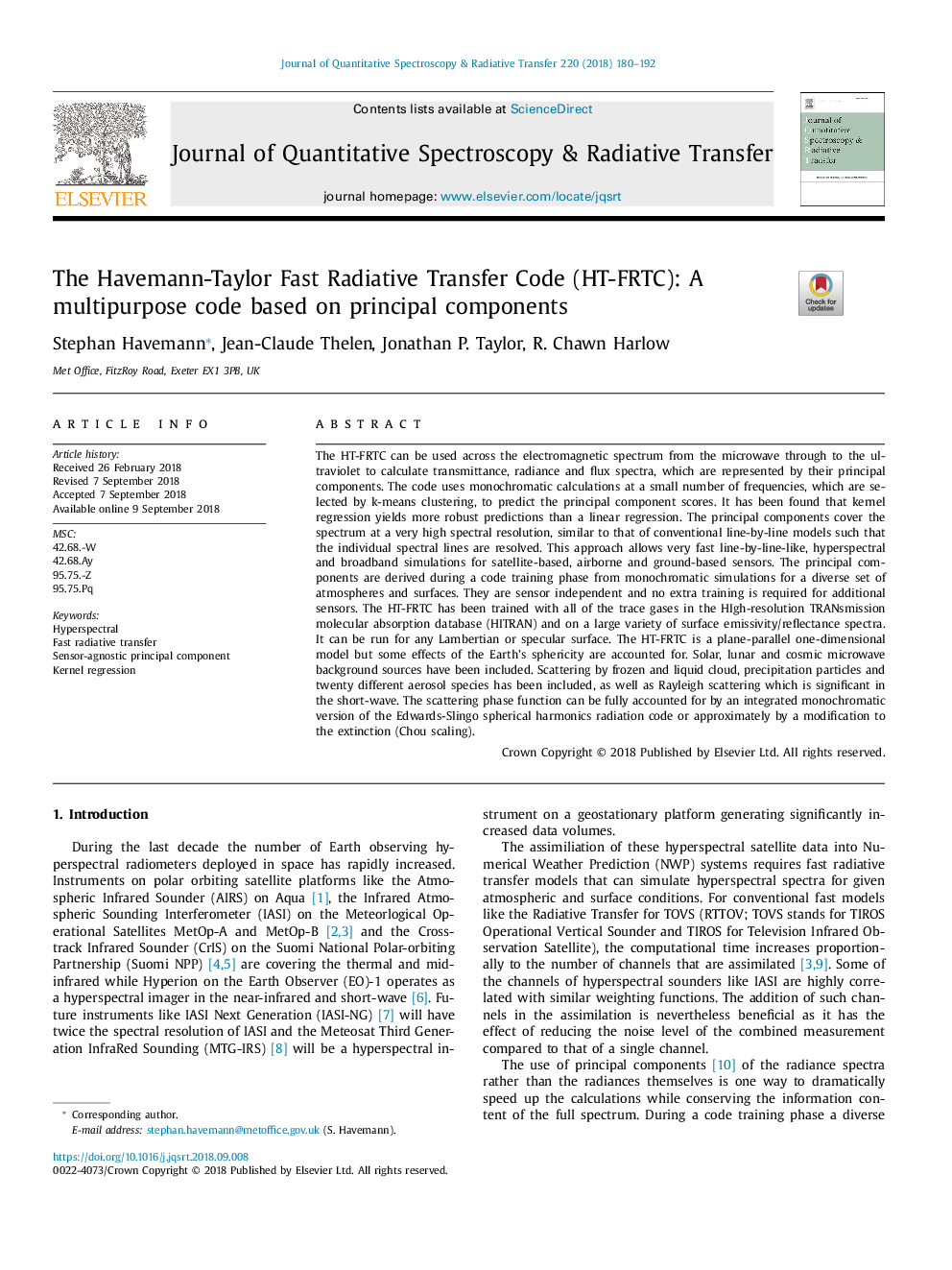| Article ID | Journal | Published Year | Pages | File Type |
|---|---|---|---|---|
| 11026892 | Journal of Quantitative Spectroscopy and Radiative Transfer | 2018 | 13 Pages |
Abstract
The HT-FRTC can be used across the electromagnetic spectrum from the microwave through to the ultraviolet to calculate transmittance, radiance and flux spectra, which are represented by their principal components. The code uses monochromatic calculations at a small number of frequencies, which are selected by k-means clustering, to predict the principal component scores. It has been found that kernel regression yields more robust predictions than a linear regression. The principal components cover the spectrum at a very high spectral resolution, similar to that of conventional line-by-line models such that the individual spectral lines are resolved. This approach allows very fast line-by-line-like, hyperspectral and broadband simulations for satellite-based, airborne and ground-based sensors. The principal components are derived during a code training phase from monochromatic simulations for a diverse set of atmospheres and surfaces. They are sensor independent and no extra training is required for additional sensors. The HT-FRTC has been trained with all of the trace gases in the HIgh-resolution TRANsmission molecular absorption database (HITRAN) and on a large variety of surface emissivity/reflectance spectra. It can be run for any Lambertian or specular surface. The HT-FRTC is a plane-parallel one-dimensional model but some effects of the Earth's sphericity are accounted for. Solar, lunar and cosmic microwave background sources have been included. Scattering by frozen and liquid cloud, precipitation particles and twenty different aerosol species has been included, as well as Rayleigh scattering which is significant in the short-wave. The scattering phase function can be fully accounted for by an integrated monochromatic version of the Edwards-Slingo spherical harmonics radiation code or approximately by a modification to the extinction (Chou scaling).
Related Topics
Physical Sciences and Engineering
Chemistry
Spectroscopy
Authors
Stephan Havemann, Jean-Claude Thelen, Jonathan P. Taylor, R. Chawn Harlow,
